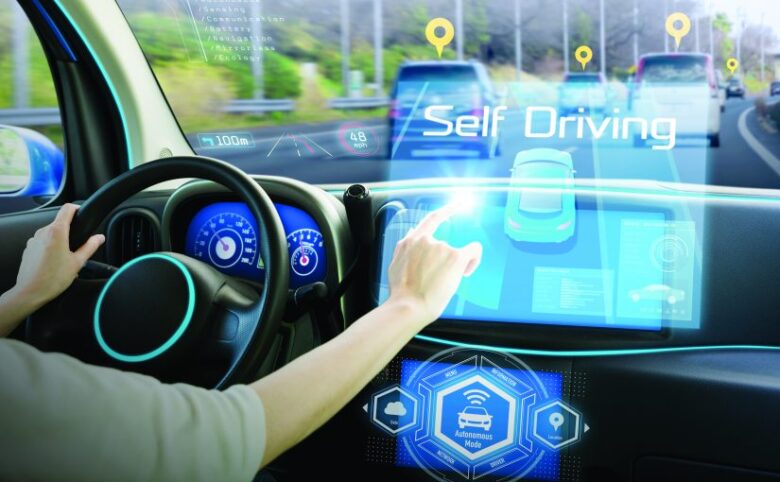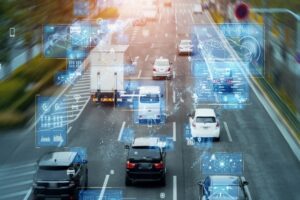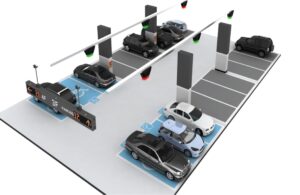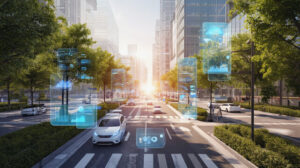Autonomous automobiles, also called self-driving cars, can operate without human oversight. They employ a mix of cameras, sensors, radars, GPS, and artificial intelligence to locate and respond to the road’s conditions. As technology develops, some of the frequently asked concerns are whether these vehicles are actually secure. Security is a major issue for regulators, developers, and everyone else. Understanding how autonomous vehicles work and the safety features they have in place is the first step toward assessing their reliability and credibility.
How Autonomous Vehicles Are Programmed to Avoid Accidents
One of the most important safety benefits of autonomous vehicles is their ability to quickly process large amounts of information and adapt to changes in the environment in real-time. The vehicles are programmed to observe traffic laws in a precise manner and avoid risky behaviors like speeding and distracted driving. Through continuous scanning of their surroundings and deciding on real-time information, they can keep the appropriate distance from other vehicles stopping at red lights and yield when necessary. These functions significantly decrease the chance of human-caused errors, which are the main causes of accidents that happen on roads.
The Role of Artificial Intelligence in Enhancing Safety
Artificial intelligence plays a crucial part in the security of autonomous vehicles. Machine learning algorithms permit vehicles to “learn” from millions of driving scenarios. This means that the more data they process, the better they are at predicting and avoiding risky situations. Through continuous training and real-world tests, autonomous vehicles are able to detect cyclists and pedestrians, as well as other potential hazards. This ability to predict obstacles allows the vehicles to initiate preventive measures before a human driver even recognizes a threat. As time passes and AI technology continues to advance in reliability and security, the efficiency and security that autonomous cars provide are predicted to rise substantially.
The Importance of Redundancy and Backup Systems
Another crucial aspect of autonomous vehicle security is using redundancy. The vehicles are outfitted with several systems that can perform the same job in different ways. For instance, radar and cameras are able to detect objects at a distance and ensure that, should one fail, the other could be in charge. Additionally, backup control systems are in place to assist in stopping the car in the event of a malfunction discovery. Regardless of software or hardware issues, autonomous vehicles require these redundant systems to ensure their safety.
Challenges in Adverse Weather
Although autonomous vehicles show tremendous potential, they are still facing difficulties in certain conditions. Conditions that cause adverse weather, like severe snow, heavy rain, or fog, may affect the cameras and sensors that are used to navigate. Additionally, the car’s software may face challenges from construction zones, poorly marked roads, and erratic traffic patterns. Although the developers are working to improve the capabilities of autonomous systems to manage the challenges, these limitations are a risk that needs to be dealt with prior to the technology being completely safe under any driving condition.
Real-world testing generates safety records.
Testing in real-life scenarios on autonomous cars has given important insights into their safety capabilities. In controlled environments and pilot programs, autonomous cars have proven to have a lower risk of accidents than traditional vehicles. However, there have been a couple of high-profile accidents that involved autonomous vehicles, which have raised questions about how they respond to unexpected circumstances. These incidents usually result in investigations and changes in safety protocols and software. Overall, although their safety records for autonomous cars are positive, constant testing and upgrades are required to improve their capabilities.
Public Perception and Trust in the Technology
Trust in the public is an essential aspect in the adoption of self-driving vehicles. While statistics indicate that autonomous vehicles are safer than human drivers, they aren’t comfortable relying solely on machines. This fear is often fueled by reports in the media of accidents involving autonomous vehicles, even though accidents like these are not common. To build public trust, there must be transparency from the companies that are creating these technologies, clear communications regarding how vehicles operate, and opportunities for the public to test the technology for themselves. As time passes, more people are able to
Data Protection in Autonomous Vehicles
Alongside physical security, cybersecurity is an essential element of the autonomous vehicle’s safety. They rely on internet connectivity and software, which expose them to cyberattacks and hacking. An attack on the system of the vehicle could result in the loss of control or misuse of personal information. To avoid such situations, companies should implement robust security measures such as encryption, regularly updated software, and intrusion detection systems. Making sure autonomous vehicles are safe from cyberattacks is as crucial as protecting them from physical injuries.
The Future of Safety Improvements in Autonomous Vehicles
We anticipate that as technology advances, the safety of autonomous cars will rise. Future developments could include improved artificial intelligence as well as more precise sensors and more integration with smart cities’ infrastructure. Cars are expected to communicate with each other as well as in conjunction with the traffic system to improve routes, stop collisions, and be able to respond quickly to emergency situations. As these advances take effect as they do, the risk of injuries and accidents is likely to drop dramatically. The implementation of autonomous technology to make roads safer is nearing completion. However, the progress made thus far is encouraging.
Conclusion
Autonomous vehicles hold the potential to transform transportation by making it more secure, efficient, and easier to access. Although the technology isn’t yet completely perfect, substantial strides have been made towards reducing the risk of driving. Self-driving vehicles prioritize safety through the use of advanced sensors, AI, redundant technology, and robust cybersecurity. Regulators’ oversight, real-world testing, and public education continue to shape the use of these vehicles. Despite the challenges that remain, the future of autonomous vehicle safety looks increasingly promising as advancements and experience are integrated.
FAQs
1. Autonomous vehicles could eliminate the risk of traffic collisions.
Although they can’t completely remove all incidents, they will drastically reduce the number that are caused by human error, which accounts for the majority.
2. Can we drive autonomous cars on public roads?
Certain autonomous vehicles are currently being evaluated on public roads under strict guidelines; however, their full-time deployment is dependent on the region and country.
3. What are the ways autonomous vehicles are evaluated to ensure security?
They go through strict simulation exercises, close-course tests, and monitored real-world driving prior to being approved for use by the public.
4. What time will self-driving vehicles be accessible?
The availability of broadband is expected to increase in the next 5–10 years, depending on the advancement of technology as well as regulatory approval and the public’s acceptance.




